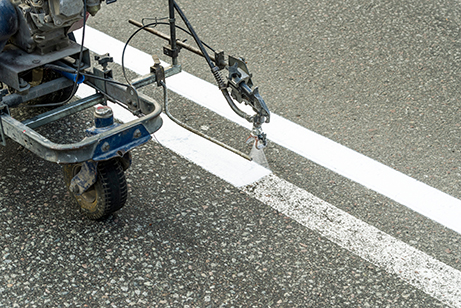Parking lot striping might seem minor, but in busy areas like Seattle, Bellevue, and Tacoma, clear and consistent pavement markings are essential. Well-marked lots improve safety, maximize parking capacity, and help your property comply with accessibility laws.
Whether you're managing a retail center in Renton, a multi-family complex in Everett, or a government facility in Auburn, maintaining visible, accurate striping is a small investment with significant returns.
Why Parking Lot Striping Matters
A freshly striped parking lot does more than look good—it improves function and safety. According to the National Safety Council, over 50,000 crashes occur in parking lots and garage structures each year, many of them caused by confusion, poor signage, or faded striping.
Proper striping helps:
- Direct traffic flow safely and efficiently.
- Ensure compliance with ADA parking regulations.
- Maximize space by aligning stalls and drive aisles.
- Reduce liability by creating clear pedestrian pathways and fire lanes.
Key Elements of Effective Striping
Well-designed pavement markings effectively communicate expectations without the need for words. Elements typically include:
- Standard Parking Stalls: Uniform spacing ensures orderly use of space.
- ADA-Compliant Spaces: Designated stalls with proper signage, markings, and adjacent access aisles.
- Directional Arrows: Help drivers navigate safely and avoid wrong-way traffic.
- Loading Zones and Fire Lanes: Legally required for emergency access and deliveries.
- Crosswalks and Pedestrian Areas: Increase visibility and reduce vehicle-pedestrian conflicts.
Each city—from SeaTac to Redmond—may have specific guidelines, so it’s important to follow local codes for stall dimensions, signage, and visibility.
How Often Should You Stripe?
In the Pacific Northwest, rain, UV exposure, and snow equipment wear down paint faster than in drier climates. In areas like Kent and Kirkland, parking lots often need restriping every 12 to 24 months, depending on traffic volume and weather conditions.
Look for these signs, it’s time to restripe:
- Lines are faded or difficult to see in low light or rain.
- Traffic flow is unclear, causing confusion or backups.
- ADA spaces are no longer compliant with current regulations.
Striping and ADA Compliance
According to the Americans with Disabilities Act (ADA), any parking lot open to the public must provide accessible parking spaces. The number required depends on the total stall count—for example, 1 in every 25 spaces must be ADA-compliant, up to a maximum of 100 total spaces.
Failure to comply with ADA regulations can lead to fines up to $75,000 for a first offense—and even more for subsequent violations.
Best Practices for Long-Term Performance
For long-lasting, high-visibility striping:
- Use fast-drying, weather-resistant traffic paint.
- Apply markings during dry conditions with pavement above 50°F.
- Sweep and clean surfaces before striping to ensure proper adhesion.
- Consider thermoplastic markings in high-traffic areas for added durability.
Final Thoughts
In high-traffic cities like Tacoma and Bellevue, parking lots see constant wear. Striping isn’t just about appearance—it’s about functionality, safety, and compliance. Regular maintenance enhances the user experience, minimizes risk, and ensures your lot operates smoothly year-round.
When the lines are clear, so is everything else.
Subscribe to our newsletter
Lorem ipsum dolor sit amet, consectetur adipiscing elit. Suspendisse varius enim in eros elementum tristique.



